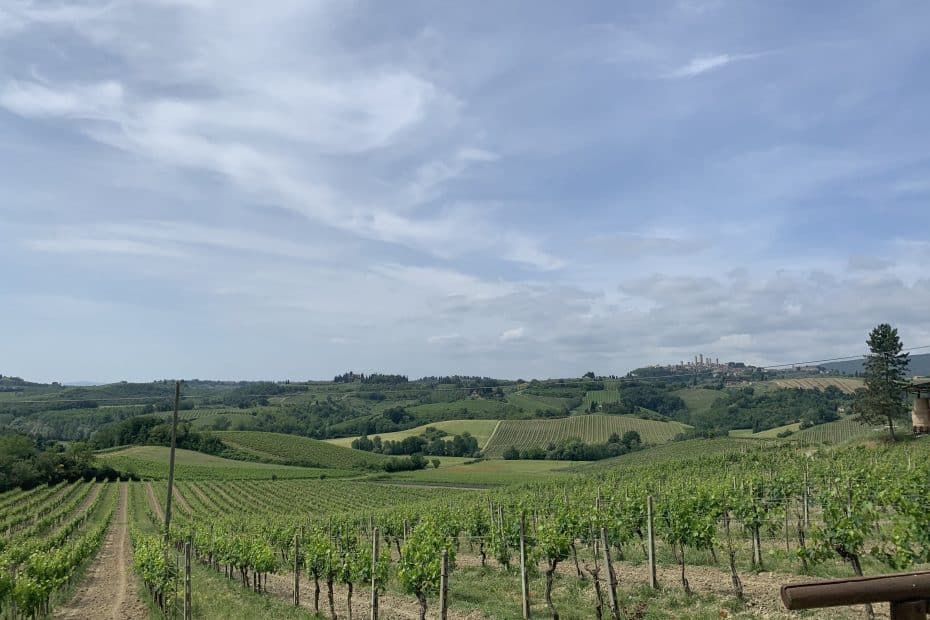Italy is the world’s top producer of wine. A trip to Italian wine country helps you understand why.
On a recent day trip to Florence from our base in Rome, five Study Abroad students participated in a Chianti Wine Tour. Hosted by Fun in Tuscany, a licensed tour company, participants visited two wineries in Tuscany, the country’s most well-known wine region. The tour included a walk through the vineyards, a taste of 12 wines paired with food – cheese, lasagna, and soup – and a visit to the medieval town of San Gimignano. The tour required full usage of the five senses to take in the process of wine from creation to consumption.
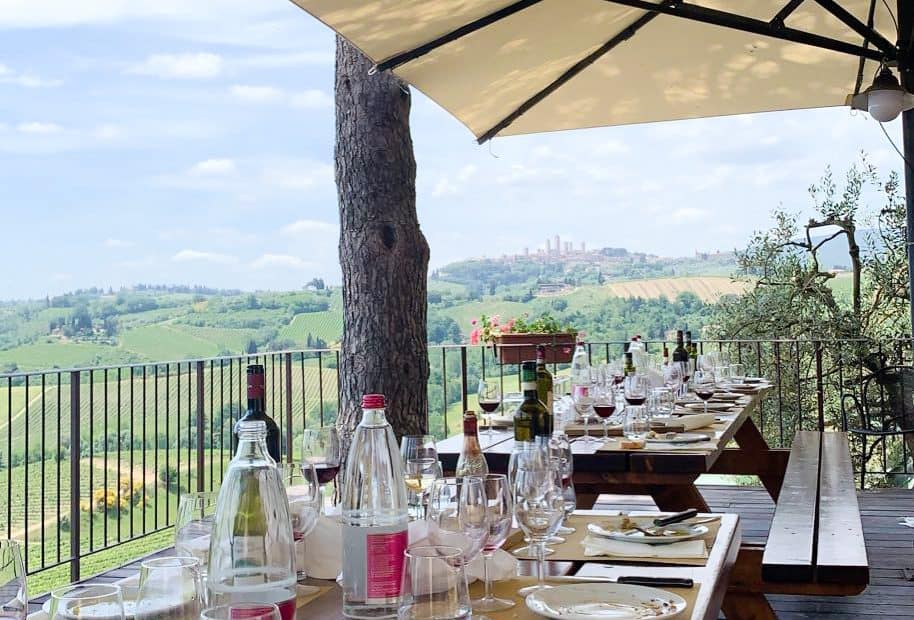
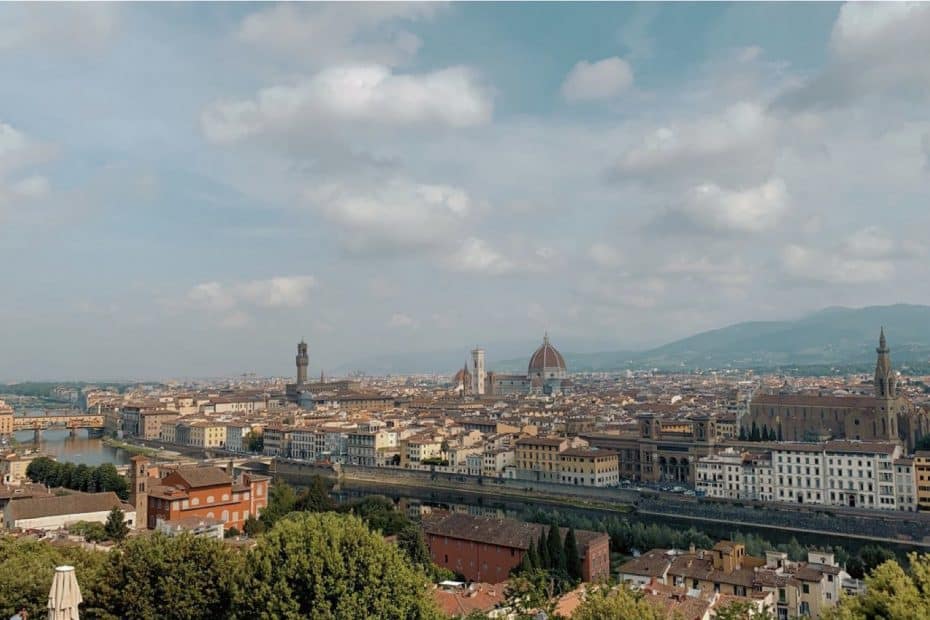
On the drive to the first winery, students were wide-eyed as their tour guide drove by a neighborhood of five-star hotels and grandiose villas fit for royalty. The setting: a hill overlooking Florence–an area pegged as the Beverly Hills of Florence. Once at the top, the narrow road opened to a wide overlook called the Piazza de Michaelangelo. It is rated one of the top ten most romantic spots in the world. The journey continued on away from the city and into the vast countryside. Once at the winery, the scent of fresh soil, sweet fruit, and hot bread was all consuming, while and the city fumes disappeared.
The first winery was the small, family owned Fattoria Poggio Alloro winery. As the white van pulled into the winery, the dust it kicked up cleared, revealing a breathtaking array of bright green vineyards that seemed to stretch for miles on end.
On the tour, the students learned the aging and distilling process of the wine. Large, stainless steel wine barrels lined the walls of the winery, each complete with a chalkboard indicating the type of wine, along with the year of production.
Tour participants walked through the vineyard where rows of grapevines adorned the countryside, with artichoke stalks flanking the ends of each row. The smell of fresh soil and grass filled the air. White cows basked in the sunshine at the far end of the property.
Then, it was time to taste the wine. Three different types of wine were poured into the glasses–one white wine, and two red wines. They were paired with cheese, olives and bread, which both heightened and deepened the flavor of the wines.
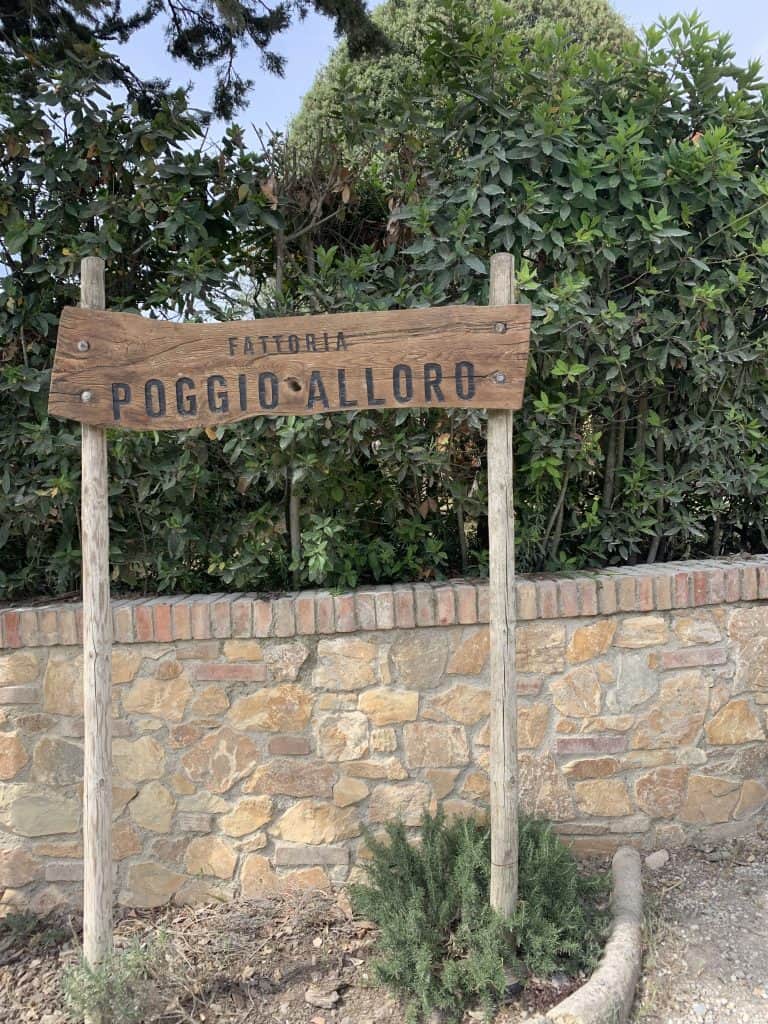
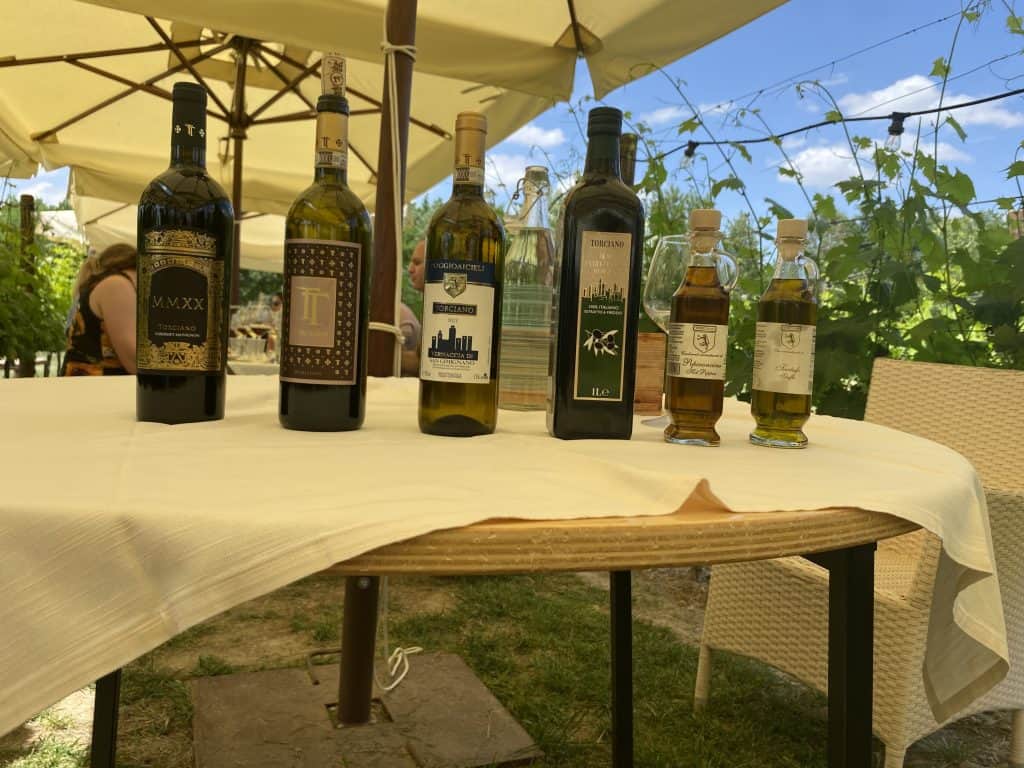
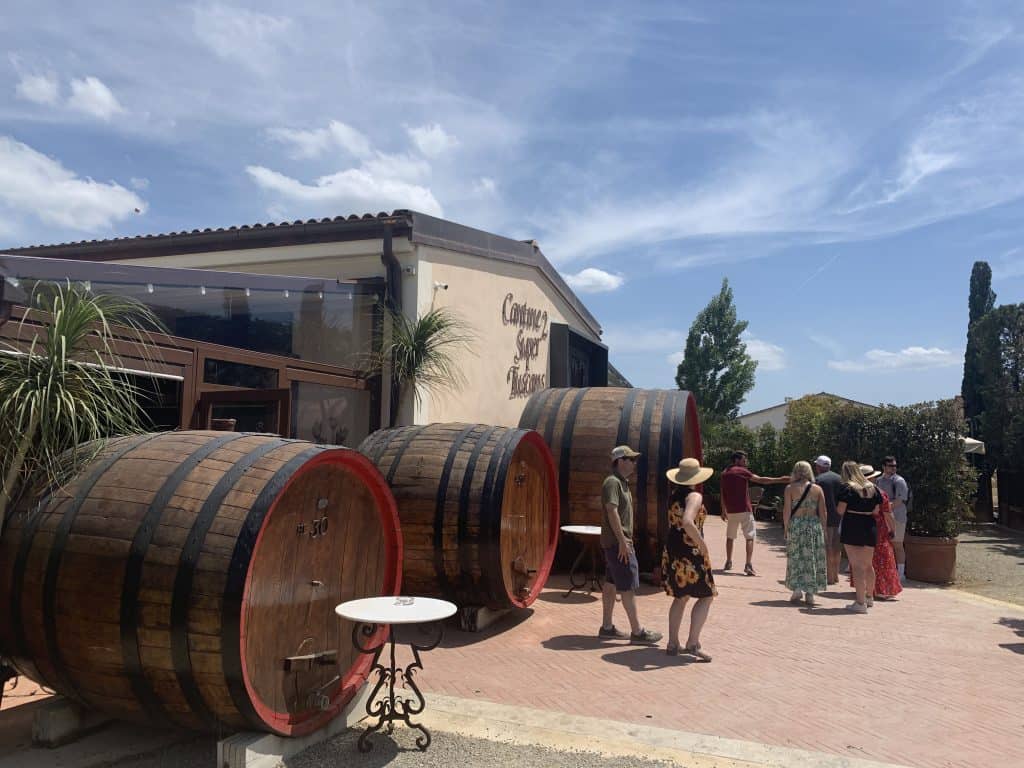
The second winery, Tenuto Torciano, also family-owned, was much larger. Tour participants gathered at wooden picnic tables in the vineyard to sample a wide selection of wines. This wine-tasting experience included a four-course meal complete with an antipasto plate with various meats and cheeses with their sweet, homemade balsamic vinegar drizzled on top, a soup that was topped with spicy olive oil, a lasagna dish that was made with creamy, luscious cheese and had white truffle oil drizzled on top, and a small wicker basket full of sweet, crunchy biscotti cookies.
Each dish was paired with a specific wine that deepened the flavor of the meal. For example, with the dessert, it was encouraged that participants delicately dip their biscotti in the light pink rose. At first, all seemed hesitant to do so, as it seemed like an odd request. But the sweetness and fruitiness of the rose actually balanced out the sweetness and crunchiness of the cookie quite well. In total, 12 wines were sampled through the course of this tasting, not all at once, of course!
Throughout the experience, the host, Alberto, encouraged us to focus on the taste of the wines we tried and to take notes on what flavors we noted or what specific food we thought paired well with each wine.
The students also met with Olivia Sperry, a University of South Carolina alumna, who happened to be on the same wine tour. She taught us the specific steps to follow when tasting wine (she had taken the university’s hospitality and sport management wine tasting course last semester).
“The first thing we are going to do is take a look at the color,” Sperry said, as she observed the wine’s color against the light and white background.
Then, she looked for imperfections and transparency in the glass of wine. She noted that the more transparent wine was, the younger it is, meaning it has not aged as long.
“Next, what you are going to do is swirl it around and check for the viscosity,” Sperry said as she proceeded to swirl her glass around, looking for dripping to determine the lightness of the wine.
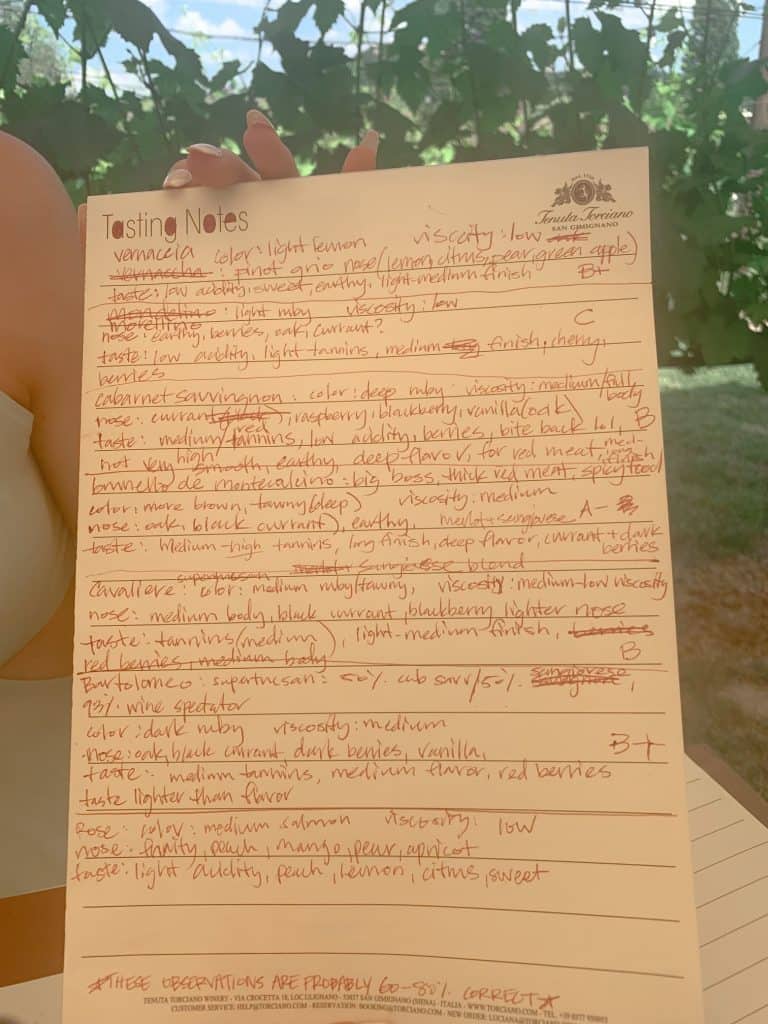
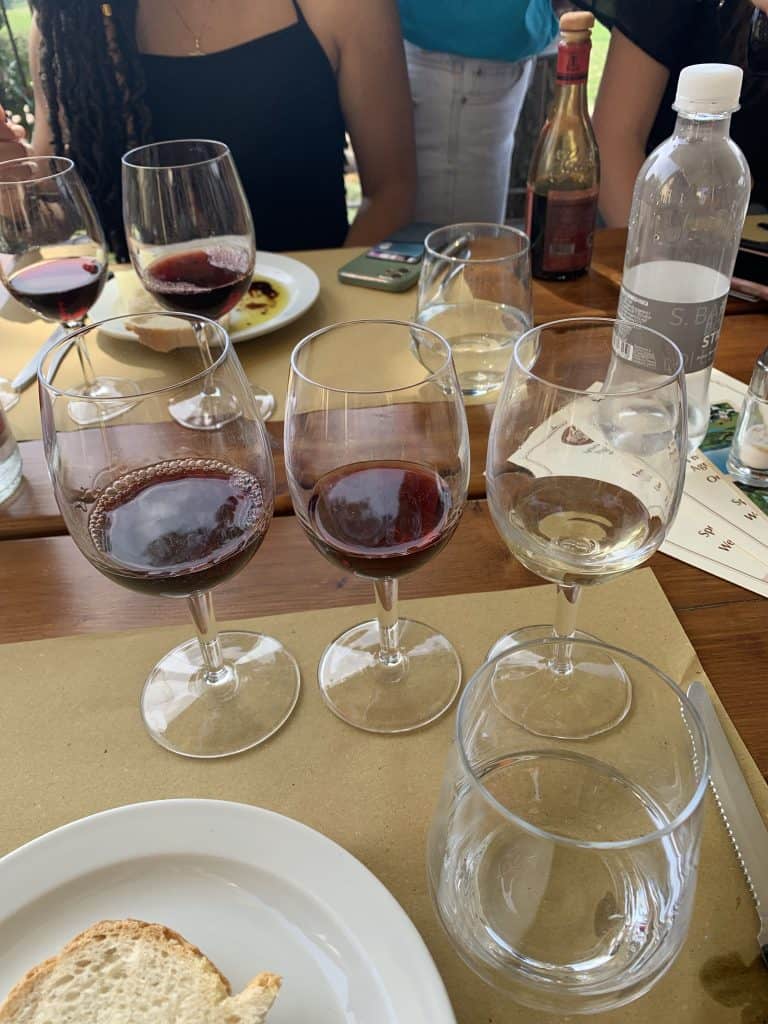
Next, “you’re going to swirl it around, nose it, and anticipate smells from the wine.” The wine’s smell will help one to anticipate the taste. Sperry warned, however, that the wine’s smells may be deceptive at times, as it may not be completely indicative of the taste. This is why it is important to both smell and taste the wine and envelope your senses in the full experience.
The final step is to taste the wine.
“The last thing you are going to do is you are going to taste it.” Tasting the wine is more than simply sipping it. One needs to swirl the wine around in your mouth because each part of your tongue tastes for different components of the wine. In order to get the full taste, you must activate your entire palette.
The owner of Tenuto Torciano winery also confirmed the importance of using all parts of your tongue to taste the wine. He added that you should swish the wine in your mouth and then take in more air, as adding oxygen to the wine helps activate 100% of the flavor verse the normal 20% you taste by simply swallowing it.
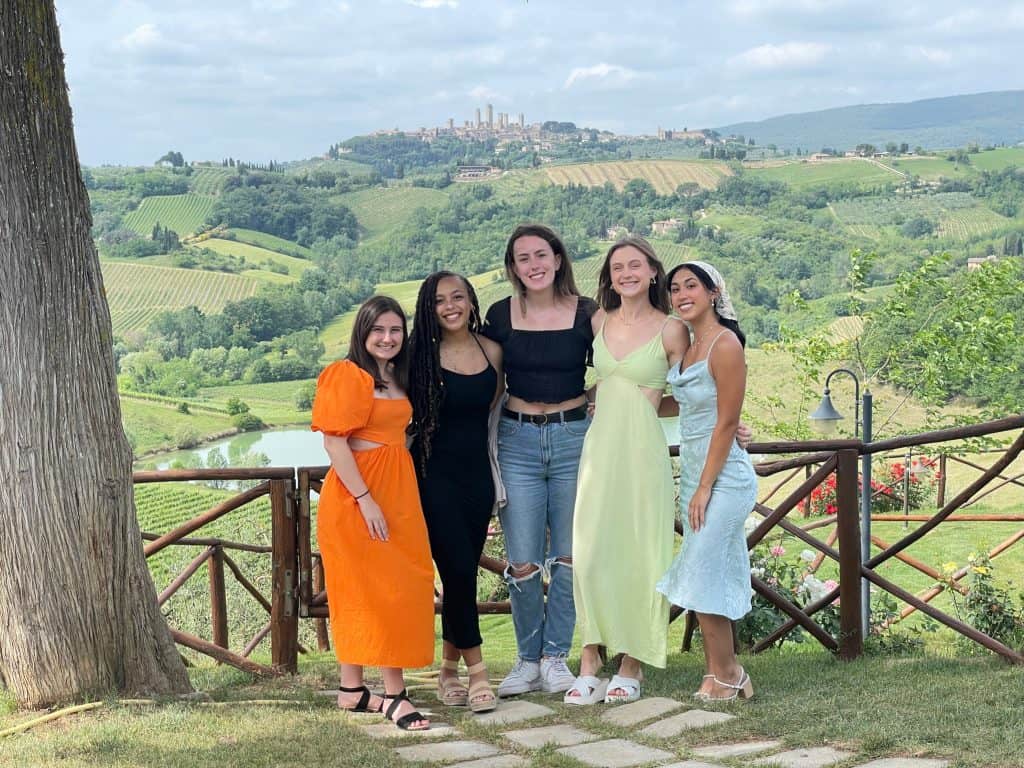
While this was a bucket list trip for these young women, it was also an educational experience. The countryside and rolling hills that stretch as far as the eye can see are a once-in-a- lifetime view. The wine itself is exquisite, and learning details as specific as how to properly hold a wine glass made the trip worthwhile.
Madison Squeri

Maia Porzio
Maia Porzio is a fourth year student majoring in Political Science with a double minor in public relations and advertising and business administration. Maia is passionate about how history has shaped the law in various cultures and is looking forward to exploring her Italian heritage in Rome.

Hannah Barrett
Hannah Barrett is a senior visual communications major, with a double minor in psychology and business administration. Hannah is passionate about travel and sharing the world around her through visual storytelling. She is excited to capture the colors of Italy and its historical architecture.
